| A | B |
|---|
| What does "in vitro" mean? | in a laboratory container (the opposite of in vitro is "in vivo" which means in the living. |
| DNA in which nucleotide sequences are combined from two different sources - often different species - is called _______. | recombinant DNA,  |
| The direct manipulation of genes for practical purposes is called _____. | genetic engineering,  |
| The manipulation of organisms or their components to make useful products is called ______. | biotechnology,  |
| Making multiple copies of DNA fragments that code for a specific polypeptide is called _______. | gene cloning,  |
| What are two basic purposes that cloned genes are useful for? | 1) To make many copies of a particular gene. 2) To produce a protein product.,  |
| A common approach to cloning a gene involves splicing the gene of interest into a __________ , then reinserting it back into the _______ which will then reproduce, making many copies of the gene. | bacterial plasmid, bacterium,  |
| Enzymes that cut DNA molecules in a limited number of specific locations are called _______. | restriction enzymes,  |
| The sequence of nucleotides that can be recognized and cut by a particular restriction enzyme is called a(n) ________. | restriction site,  |
| Pieces of DNA that have been cut by a restriction enzyme are called _______. | restriction fragments,  |
| Restriction fragments can be permanently sealed by an enzyme called _______ which catalyzes the formation of covalent bonds between the sugar at the end of one fragment and the phosphate group at the end of the other fragment. | DNA ligase,  |
| An agent used to transfer DNA in genetic engineering. Plasmids that move recombinant DNA and a virus that transfers recombinant DNA by infection are both examples. | cloning vector,  |
| The most commonly used vector is a(n) _______. | bacterial plasmid (Remember, a vector is a DNA molecule that can carry foreign protein into a cell and replicate there),  |
| A method of quickly producing a lot of DNA copies in vitro from a small amount of original DNA is called ______. | PCR (stands for polymerase chain reactions), 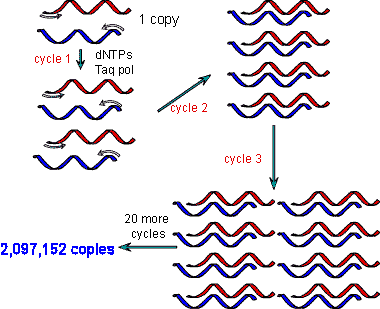 |
| A technique for separating DNA or protein based on size and charge is called _______. | gel electrophoresis,  |
| A technique that combines the techniques of gel electrophoresis with nucleic acid hybridization to separate and identify specific sequences of DNA is called _____. | Southern blotting, 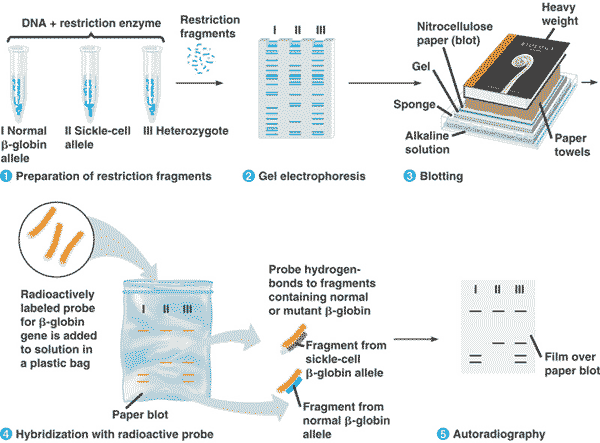 |
| Differences in DNA sequences on homologous chromosomes that can result in different patterns of restriction fragment lengths | RFLP's (restriction fragment length polymorphisms), 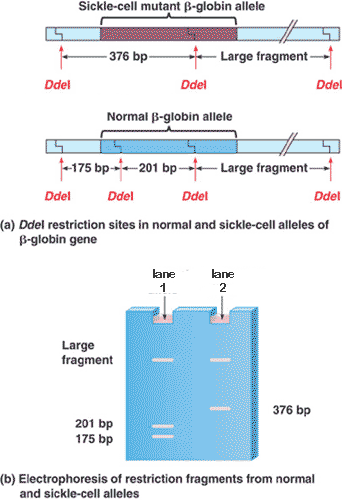 |
| Base pairing between a gene and a complementary sequence on another nucleic acid molecule that usually carries some type of marker is called _____. | nucleic acid hybridization, 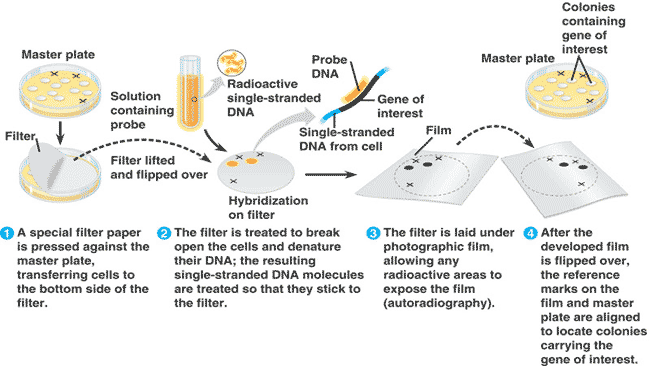 |
| An artificial version of a bacterial chromosome that can carry inserts of 100,000 to 500,000 base pairs is called a(n) ______. | BAC (bacterial artificial chromosome) |
| A ______ library is a limited gene library using complementary DNA. The library includes only the genes that were transcribed in the cells examined. | cDNA library (cDNA is made off of mRNA using reverse transcriptase) |
| A genetic map in which the actual physical distances between genes or other genetic markers are expressed, usually as the number of base pairs along the DNA. | physical map |
| An international collaborative effort to map and sequence the DNA of the entire human genome. | Human Genome Project |
| An individual's unique collection of DNA restriction fragments, detected by electrophoresis and nucleic acid probes. | DNA fingerprint, 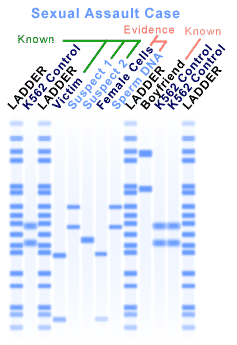 |
| A genetic map based on the frequencies of recombination between markers during crossing over of homologous chromosomes. | linkage map |
| An organism that has acquired one or more genes by artificial means can be called a(n) ______ or a(n) _______. | genetically modified (GM) organism or a transgenic organism. |
| The alteration of genes of a person afflicted with a genetic disease is called ______. | gene therapy,  |
| A one base-pair variation in the genome sequence is called a(n) _____. | SNP (single nucleotide polymorphism) |
| A labeled single-strand nucleic acid molecule used to bond to and identify a specific nucleotide sequence in a nucleic acid sample. | nucleic acid probe |
| A vector that combines the essentials of a eukaryotic chromosome - an origin for DNA replication, a centromere, and two telomeres - with foreign DNA. | YAC (yeast artificial chromosome) |
| A technique to discover the function of a gene by introducing specific changes into the sequence of a cloned gene, reinserting the mutated gene into a cell, and studying the phenotype of the mutant. | in vitro mutagenesis |
| The systematic study of the full protein sets encoded by genomes. | proteomics |
| A single-strand end of a double-stranded DNA restriction fragment is called the ______. | sticky end,  |
| A method to detect and measure the expression of thousands of genes at one time. Tiny amounts of a large number of single-stranded DNA fragment representing different genes are fixed to a glass slide. These fragments, ideally representing all the genes of an organism, are tested for hybridization with various samples of cDNA molecules. | DNA microarray assay, 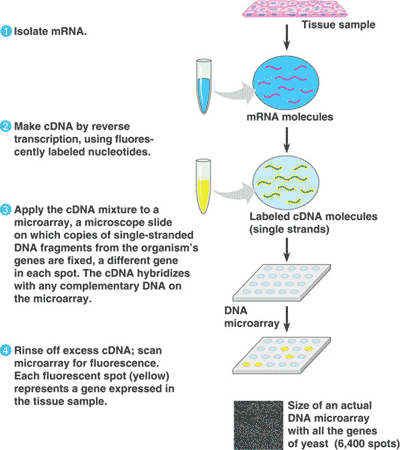 |
| The study of whole sets of genes and their interactions is called ________. | genomics |
| A degradative enzyme that recognizes and cuts up DNA (including that of certain phages) that is foreign to a bacterium. | restriction enzyme,  |
| A lineage of genetically identical individuals or cells is called a(n) _____. | clone |
| A cloning vector that contains the requisite prokaryotic promoter just upstream of a restriction site where a eukaryotic gene can be inserted. | expression vector |
| A technique to introduce recombinant DNA into cells by applying a brief electrical pulse to a solution containing cells. The electricity creates temporary holes in the cells' plasma membrane, through which DNA can enter. | electroporation |
| A plasmid of a tumor-inducing bacterium that integrates a segment of its DNA into the host chromosome of a plant; frequently used as a carrier for genetic engineering in plants. | Ti plasmid, 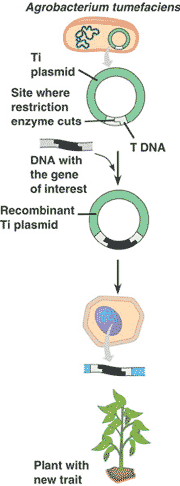 |
| In DNA, the separation of two strands of a double helix by heating them is called ______. | DNA denaturation |
| A technique to silence the expression of selected genes in nonmammalian organisms. The method uses synthetic double-stranded RNA molecules matching the sequence of a particular gene to trigger the breakdown of the gene's messenger RNA. | RNAi (RNA interference) |
| A DNA molecule made in vitro using mRNA as a template and an enzyme called reverse transcriptase. | cDNA (complementary DNA) |
| A set of thousands of DNA segments from a genome, each carried by a plasmid, phage, or other cloning vector. | genomic library, 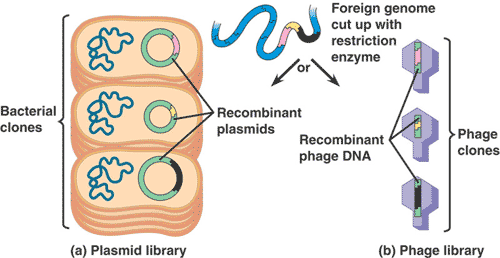 |
The picture below shows a(n) ____________.,  | DNA fingerprint,  |
According to the DNA analysis of the crime scene shown below, who committed the crime?,  | Suspect #1 (notice how suspect #1's band fragments match the sperm sample taken from the crime scene),  |
Which laboratory technique is shown below?,  | gel electrophoresis,  |
What is the name of the process shown below?,  | gene therapy,  |
What is "A" in the picture below?,  | restriction site,  |
What is "B" in the picture below?,  | restriction enzyme,  |
What is "C" in the picture below?,  | DNA ligase,  |
Which laboratory technique is shown below?,  | nucleic acid probe hybridization,  |
Which laboratory technique is shown below?,  | Southern Blot,  |
Why is the tagged nucleotide always at the end of the DNA fragment in this sequencing technique?, 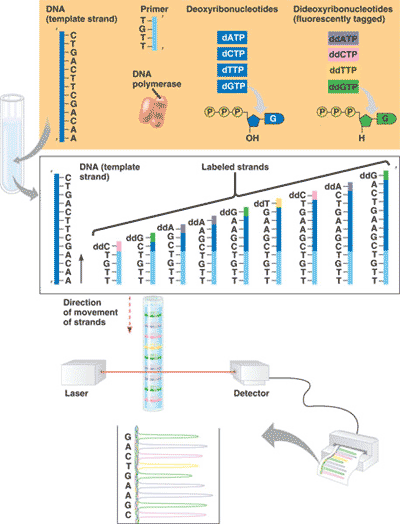 | The tagged nucleotide uses a special pentose sugar that doesn't allow for any more nucleotides to bond to it due to its structure.,  |